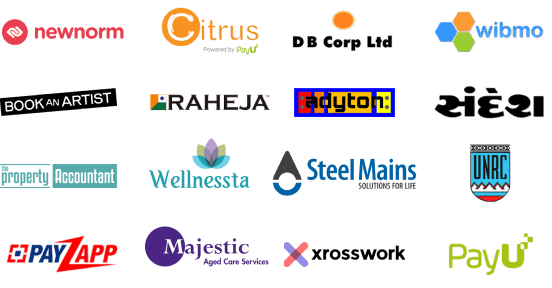Businesses today need to be faster and smarter to keep up. Automation's a big part of hitting those marks. Whether you're a CTO comparing platforms, a product manager weighing up options, or an agency working out your next steps, knowing the differences between AI-driven and traditional automation is key.
This article lays out the main differences, benefits, use cases, and actionable advice to help you nail the best approach for your business.
Understanding AI-Based Automation and Traditional Automation
What is Traditional Automation?
Traditional automation, often known as rule-based automation, uses set rules to automate tasks. It sets up 'if-then' directions into a system to handle repetitive jobs. Think of something like an invoice approval process that sends documents for a signature after a set threshold—classic traditional automation.
Rule-based automation excels in tasks that are repetitive and predictable. Once set up, the processes just keep ticking without much fuss.
What is AI-Based Automation?
AI automation relies on technologies like machine learning, natural language processing, and computer vision to handle workflows that need learning and decision-making beyond fixed rules. AI models draw lessons from past data, spotting patterns and improving over time.
Take an AI-powered customer support bot, for example. It understands what you're asking, picks up context, and gets better without needing constant rule tweaking.
Key Differences Between Traditional vs AI Automation
- Flexibility: Unlike its rigid counterpart, AI-based automation changes with the situation.
- Complexity: Rule-based is for the simple stuff; AI tackles data-driven, complex tasks.
- Setup Time: Traditional can be faster to launch if everything’s clear; AI needs data prep and training time.
- Maintenance: Rule-based means manual tweaking; AI just keeps learning.
- Cost: Traditional generally costs less to start with, but AI might bring down costs over time despite needing more upfront.
Exploring Common Approaches Within Each Category
Rule-Based Automation
This relies on rules you set yourself. Examples? Macros, scripted workflows, and robotic process automation (RPA) bots that follow explicit instructions. You'll find these in:
- Correcting data entries
- Routing and approving documents
- Handling basic IT service tickets
Rule-based automation's straightforward and easy to track because every decision path is laid out clearly.
Machine Learning Automation
Machine learning automation sifts through data to build predictive models for things like:
- Detecting fraud in transactions
- Predicting when manufacturing equipment needs maintenance
- Tailoring marketing campaigns to individuals
It adds process smarts, catching insights that traditional systems might miss.
Real-World Use Cases and Experience Insights
Case Study: AI-Based Automation in Customer Support
A global e-commerce player rolled out an AI chatbot with natural language processing to handle and sort support tickets. Result? Average handling time slashed by 35%, first-contact resolutions up by 20%, and human agents freed up to tackle tougher issues.
Mixing AI with rule-based backups brought efficiency and reliability.
Case Study: Traditional Automation in Finance
A big financial firm set up rule-based RPA bots for processing invoices. These bots pulled data from templates, sent info for approvals, and initiated payments. The results? Cutting manual labor by 50% and improved compliance.
Simple rule-based setups show solid returns in steady scenarios.
Lessons Learned
- Pairing AI with traditional methods gets the best of both worlds by matchmaking tools to tasks.
- Understanding your task complexity and variability helps nail the right automation pick.
- Tidy, properly labeled data works wonders for machine learning tasks.
Evaluating Automation Solutions: What CTOs, Product Managers, and Agencies Should Consider
Alignment With Business Goals
Figure out your top priorities first. Need quick turnarounds, more accuracy, or a better customer experience? Knowing this helps match your automation strategy correctly.
Assessing Usability and Integration
No matter if it’s traditional or AI-based automation, think about how smooth it’ll be to implement and fit into your current systems. Some platforms offer low-code tools for easier deployment, while others need more hands-on tinkering.
Process Intelligence Capabilities
Process intelligence lets you map out and monitor workflows, spot automation opportunities, and keep everything running smoothly as needs evolve.
Transparency and Compliance
Ensure your automation setup is in line with data privacy standards such as GDPR or HIPAA. Especially for AI, having clear audit trails is crucial for compliance.
Cost and ROI
While traditional setups are usually cheaper initially, they might demand more upkeep. Conversely, AI could give a higher return in the long haul, despite its initial demands on data and expertise.
Step-by-Step Guide to Implementing Automation Effectively
1. Map Your Processes and Identify Automation Candidates
Outline main workflows, detailing the parts. Pinpoint repetitive, high-volume tasks for rule-based systems, and go for AI where data insights are key.
2. Prepare Data and Define Success Metrics
Collect and clean data for AI. Set concrete KPIs like time saved, error reduction, or customer delight levels.
3. Choose the Right Tools and Platforms
Review vendors offering traditional, AI-based, or hybrid automation solutions. Look for support capacity, scalability, and security measures.
4. Start Small With Pilots
Run pilot projects to test automation’s impact and gather feedback. Pilots help build trust and measure visible gains.
5. Scale and Optimize
Gradually spread automation across processes, keeping an eye on performance. Update setups or retrain AI models based on feedback.
Building Trust: Security, Compliance, and Reliability in Automation
Your automation should be secure from the ground up. AI solutions should encrypt data and have role-based access control and audit logs for transparency.
Many sectors need compliance with standards like SOC 2 or ISO 27001, so choose solutions built to meet those criteria. In AI, having understandable decision processes is a must. Including humans in decision reviews can boost reliability.
Final Thoughts and Next Steps
Deciding between AI-based and traditional automation comes down to your unique business needs, process complexity, and resources.
Rule-based is great for simple, repetitive jobs. AI shines in tricky, evolving tasks where learning is crucial.
A lot of companies find a mix works best. Start by setting clear goals, test out small projects, and build up automation, focusing on security and rule compliance.
If you're exploring automation tools or need expert advice on getting started, get in touch with our team. We partner with CTOs, product managers, and agencies to create scalable, reliable automation that genuinely benefits your business.




